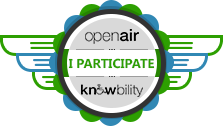In January, I was very excited to see a link to an interesting article that was posted on the American College of Rehabilitation Medicine’s Brain Injury Interdisciplinary Special Interest Group Linked-In page.
The article was called, “Striking a Nerve: TBI Up Close and Personal” and it was from a web publication called MedPage. I have been thinking about this article for months.
The article was a doctor’s answers to a Medpage series where they asked doctors for their views on the state of medicine.
One thing to tell you about me is that because I am still learning my way around the computer again and because I use the computer sparingly in order to minimize the energy drain that using the computer causes me, I am not the person that clicks on links very often.
However, I felt drawn to open this link to the Medpage blog. I was glad I opened it. On reading the article, I was thrilled, awed, inspired by the story and inspired by the possibilities in the story. Wow!
Just by way of alittle background, I had become a member of the American College of Rehabilitation Medicine (ACRM) about 9 years ago in order to learn about brain injury recovery and to get the the latest expert knowledge to help my recovery. I also joined ACRM because I wanted to retrain my brain to think like a PhD again and the best way I knew to do that was to surround myself with other PhDs and learn from that exposure.
So finding the MedPage article was exactly the sort of thing I had joined ACRM to be informed about.
Dr Romanas, the author of the article, felt very strongly about the need to improve medical education for doctors to improve their abilities to diagnose and treat persistent symptoms after brain injury.
Not only was the writer of the article a practicing MD and a PhD, but she was also someone who had overcome persistent symptoms following a car accident when she was 16, to become that well educated, pursue her career as a pathologist and raise her family.
Her article was very well written, and so raw, that I found reading it very compelling.
In addition, although her injury happened at age 16, her recent improvements in brain functioning and her ability to function in her life and her work that resulted from the cognitive therapy program she did recently happened roughly 30 odd years after her injury.
Since I am about 16 years out from my accident, the article lets me know, through anecdotal evidence anyway, that there will continue to be possibilities ahead for my recovery also. I presumed that I would continue to experience neuroplasticity, but its always good to have a model ahead of me and concrete information about how she did it!
I am inspired by what Dr Romanas was able to accomplish while overcoming siginificant symptoms. Many of us could not accomplish what she has accomplished with our brain’s working just fine.
I am also always inspired to meet others (and now their names!) of others who have had functional recovery after 2 years post-injury like me.
Here’s the article:
http://www.medpagetoday.com/Neurology/HeadTrauma/44084
I have a lot more to say about this article, and my subsequent talk with Dr Romanas. I will save it for another blog.
Have you had recovery after 2 years? I would love to hear more stories of people’s recovery after 2 years post-injury.
Why two years? Because I was told by my doctors that they will never get better or recover further after 2 years. And I hear from many, any others that they are told either one or two years also.
In fact, I would love to hear thousands and thousands of stories of people’s recoveries after the 2 year mark!
That would be music to my ears to counteract all the times I heard that I couldn’t get better after 2 years.
Read More - “Striking a Nerve: TBI Up Close and Personal” from MedPage


Recent Comments